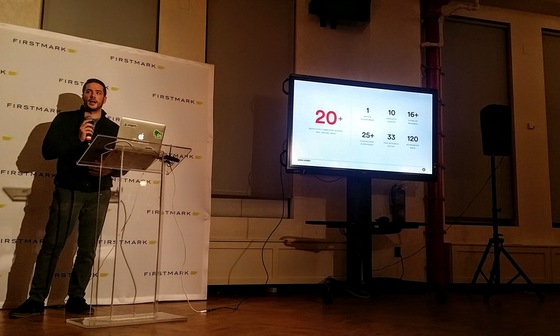By Design: The Sprint Process of General Assembly and New Meetup Look
NEW YORK — If you’re rebranding and you didn’t go to the Design Driven meetup last November 1 at WeWork, you missed the outstanding presentations of Bryan Berger, Product Design lead at General Assembly and Jennifer Gergen, Design director at Meetup.
Among the presenters in the New York meetups this year, Berger and Gergen seem to have the most material for the audience, if only there were enough time for them to present them. The two took their time to explain the design processes of their respective companies.
General Assembly holds bootcamp-style tech, business and design classes in the Flatiron district, while Meetup offers a platform for people to form communities based on their interests.
For General Assembly, Berger took us to through the results of its “distraction-free” design sprint, taking us to the company’s product design process “to position ourselves to be more effective.”
“We mapped out who’s who and where we are,” he said.
It was interesting to learn how they took the initiative to look back into its library of materials to see if they are still relevant. Not many companies would bother to do so and to see if previous works still mattered, as the torrent of materials can be overwhelming, for any company.
“This is how I do it with my team: ‘Get aligned, set expectations, pre plan, get buy-in and make it real,” Berger said.
In aligning objectives, Berger said General Assembly followed patterns that champion reusability, consistency and efficiency across products and teams. “We had a single style guide to help our production cycle. We spoke the same languages across design and engineering.”
“We optimize team efficiency and design impact, fix processes and sunset old cluttered systems and shed light on things that have been overlooked,” he added.
After its sprint, Berger was only too willing to share its learnings:
- Empower your team
- Draft a design team charter
- Pair new hires with veterans
- Cross-product design collaboration is very powerful
- Make research insights accessible to everyone
- Frame stakeholder discussions in the present
(It’s easier to work with wish lists if we understand the facts first)
- It’s extremely inefficient to achieve growth and future goals without the foundational pieces in place
- Teams can now visualize the complexity and work to simplify it
- We stubbed out a huge chunk of our Pattern Library
- We identified key areas for additional research in our ecosystem
- We have actionable roadmaps to tackle each initiative in order to keep the momentum going
What to avoid? “Silos are destructive,” he said. “They resist change. They promote one-off solutions. Scalability isn’t top of mind. They burn people out.”
Gergen talked about the redesign of Meetup, which now sports a new logo that captures the spirit of the platform: it’s a swarm (of people).
Gergen admitted that its beginnings as a company “didn’t have a design team when we started. We did usability before design.”
It helped explain the time it took the company a long time to rebrand since it was founded after 9/11 when there were no apps and UI was an abbreviation still alien to many. There was a lot to “unlearn.” There was a need to define design. Its rebranding, unveiled this year, took 2 years. It included a “remade Meetup that is personal, lightweight and a (good) mobile experience.”
Gergen showed how a design director’s job goes beyond the creative, as she made use of spreadsheets to do a health checkup and a design team health benchmark for Meetup.
She also made sure that everyone was involved. The primaries: the key decision makers; the secondaries: the designers who know their work and the subject matter experts. Depending on the tasks, it had IOS experts providing assistance for its app development or marketing people for its marketing efforts.
How do you get your team to become design driven? “Get lucky,” she said.
She elaborates, “Do user research. Do stakeholder surveys. Do a company wide survey.” For the latter, some staffers produced essays that were 10 pages long.”
Because its company actually makes people meet in person, she had some of her design team go to actual meetups. “We organized teams to go to meetups and interview people.”
Percolate and TeachersPayTeachers were other presenters.
